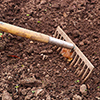Az önkizsákmányolás fénytörései
A kertészet és a térbeli, társadalmi mobilitás összefüggései egy tanyán élő nő történetében
DOI:
https://doi.org/10.18030/socio.hu.2022.2.1Kulcsszavak:
térbeli és társadalmi mobilitás, habitus, test, önkizsákmányolás, ágencia, kertészetAbsztrakt
A tanulmány egy tanyán élő egyedülálló idős nő történetén keresztül arra a kérdésre keresi a választ, hogy mennyiben tekinthető a fóliasátras kertészet a társadalmi mobilitás, avagy a boldogulás útjának. Az egyéni élet- és munkatörténetet egyfelől tágabb társadalmi összefüggésekben, a kertészet, mint kollektív mobilitási csatorna (Szelényi 1992:150) felől értelmezi, másfelől a boldogulás lehetőségét a mezőgazdasági termelést meghatározó párkapcsolati kooperáción keresztül, azaz a társadalmi nemi egyenlőtlenségek felől is vizsgálja. Az esettanulmány a társadalmi előrelépés lehetőségét behatároló strukturális korlátok és egyéni ambíciók összjátékát Bourdieu (2000) kései habitus fogalmán keresztül értelmezi, és külön figyelmet szentel a „testbe írt” tudásokra és társadalmi tapasztalatokra. Az önkizsákmányolás fogalmával egyszerre vizsgálhatók a strukturális korlátok, a társadalmi nemi egyenlőtlenségek, valamint a testi tapasztalatok és a saját testhez fűződő viszony, miközben a fogalom a hagyományos paraszti életmód és a bérmunkáslét közötti átmenetet, valamint a tanyai térbe ágyazott mobilitási mintázatokat is új megvilágításba helyezi. Az önkizsákmányolás fogalmára épített elemzésben ugyanakkor mindvégig feszültség van a két értelmezői perspektíva, a kutató nézőpontja és a saját megélt életösszefüggéseiről beszélő interjúalany nézőpontja között. Az esettanulmány ezért az önkizsákmányolás fogalmát problematizálva igyekszik megvonni az értelmezés határait.






